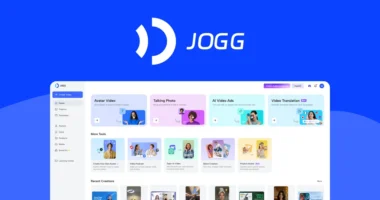Time clock software helps small businesses automate employee time tracking while reducing payroll errors and processing time by up to 70%. Modern solutions offer mobile clock-in capabilities, GPS verification, and integration with existing payroll systems for $2-$5 per employee monthly. These systems can save up to 7% on annual payroll costs through reduced time theft and improved accuracy. Small business owners who understand key features and implementation strategies position themselves for significant operational improvements.
Quick Overview
- Cloud-based time clock software costs $2-$5 per employee monthly, making it affordable for small businesses with limited budgets.
- Mobile clock-in features with GPS verification enable small businesses to track remote workers and field employees accurately.
- Automated payroll processing reduces manual errors and saves up to 70% of processing time for resource-constrained small businesses.
- Self-service portals allow employees to manage schedules independently, reducing administrative burden on small business owners.
- Integration with existing payroll systems ensures seamless operations while providing real-time attendance monitoring for better staff management.
Why Your Small Business Needs Time Clock Software
While many small business owners still rely on traditional timekeeping methods, modern time clock software has become an essential tool for streamlining operations and boosting profitability. This technology delivers significant benefits across multiple areas of business management.
Time clock software dramatically improves payroll accuracy by eliminating manual entry errors and preventing time theft, while reducing processing time by up to 70%. The system’s automation capabilities guarantee compliance with labor laws and generate real-time reports for data-driven decision making. Businesses can leverage mobile access features to enable employees to track time from any location.
Automated time tracking eliminates human error and time theft while slashing payroll processing time, ensuring compliance and enabling data-driven management decisions.
Small businesses can expect cost savings of up to 5% through accurate time tracking and reduced administrative overhead.
Additionally, the software enhances workplace productivity by monitoring attendance patterns, identifying inefficiencies, and improving resource allocation. For most businesses, the return on investment becomes apparent within the first few pay periods.
Top Time Clock Software Features for Small Teams
Modern time clock software comes equipped with powerful features that give small teams the tools they need to operate efficiently. Essential capabilities include automated time tracking, streamlined scheduling, and seamless payroll integration. With 4.8 out of 5 ratings among top business apps, these solutions have proven their value for small business operations.
| Feature | Benefit |
|---|---|
| Mobile Clock-In | Track time anywhere with GPS verification |
| Self-Service Portal | Employees manage schedules independently |
| Automated Payroll | Reduce manual data entry and errors |
Small businesses particularly benefit from features like automatic overtime calculations, customizable pay rules, and real-time attendance monitoring. The software’s mobile accessibility guarantees teams can clock in/out via smartphones, while built-in compliance tools help maintain labor law requirements. Advanced functions such as AI-powered scheduling and demand forecasting help optimize workforce management, while secure cloud storage protects sensitive employee data.
Cost-Benefit Analysis and ROI for Small Businesses

Most small businesses can achieve significant return on investment from time clock software, with potential savings of up to 7% on annual payroll costs. The initial investment typically includes basic cloud software ($2-$5 per employee monthly), hardware costs ($100-$1000 for physical time clocks), and implementation fees.
Small businesses investing in time clock software can cut payroll costs by 7%, far exceeding initial setup and subscription expenses.
The long-term benefits outweigh these upfront expenses through:
- Reduced timesheet processing time
- Decreased payroll errors (1-8% recovery)
- Minimized time theft (7% reduction potential)
- Automated compliance management
- Improved scheduling efficiency
While ongoing costs include subscription fees, maintenance, and storage, businesses can expect positive ROI through improved productivity, better resource allocation, and enhanced employee accountability. Similar to cloud-based accounting platforms like Xero, modern solutions like one-touch clock in features ensure employees can quickly and accurately record their time without complicated processes.
The scalability of modern time clock systems also guarantees that the solution grows alongside the business without requiring significant additional investment.
Selecting the Right Time Clock Solution for Your Company
Selecting an effective time clock solution requires careful evaluation of both current operational needs and future business goals. Companies should assess their workforce size, locations, and specific industry requirements while considering how their chosen system will scale over time. Cloud-based solutions provide the flexibility to access time tracking systems from anywhere with an internet connection.
| Key Factor | Consideration |
|---|---|
| Workforce | Number of employees and locations |
| Industry | Compliance and regulatory needs |
| Integration | Compatibility with existing systems |
| Mobility | Remote work requirements |
| Growth | Future expansion plans |
The evaluation process should focus on hardware options that match the company’s authentication needs, from basic punch cards to advanced biometric systems. Software capabilities must align with operational requirements, including real-time tracking, scheduling tools, and reporting features. Small businesses should prioritize solutions offering strong vendor support, regular updates, and proven reliability in the market.
Implementing Time Clock Software Successfully

While implementing time clock software may seem intimidating, a systematic approach guarantees a smooth changeover for organizations of all sizes. Success depends on careful planning, extensive training, and proper system integration.
Start with a detailed implementation plan that outlines timelines, responsibilities, and resource requirements. Launch a pilot program with a diverse group of employees to test the system and identify potential issues. Employees can use various clock-in options including web, mobile, PIN entry, and facial recognition methods. During this phase, provide extensive training sessions and support materials to guarantee everyone understands the new procedures.
A thorough implementation plan and diverse pilot program lay the foundation for successful time clock software adoption.
Integration with existing payroll and HR systems is essential for seamless operations. After launch, monitor usage patterns, gather feedback, and address technical concerns promptly.
Regular system maintenance and updates will keep the time clock software running efficiently, while continuous employee feedback helps optimize performance and guarantee long-term adoption.
Frequently Asked Questions
Can Employees Clock in if the Internet Connection Goes Down?
Yes, employees can still clock in when internet connectivity fails.
Modern time clock systems typically offer offline functionality that temporarily stores time entries on the local device. When the connection returns, the data automatically syncs with the main system.
This feature works through mobile apps or dedicated time clock devices that cache data locally. Important features like GPS tracking and photo verification can still function offline, ensuring accurate timekeeping despite network issues.
What Happens if an Employee Forgets Their Mobile Device or Password?
When employees forget their mobile device or password, multiple backup options are available. They can use physical time clocks, shared kiosks, or web-based portals accessible from any computer.
For password issues, employees can contact IT support for immediate resets or use self-service recovery options. Additionally, supervisors can process manual time entries with proper documentation.
Some workplaces maintain spare mobile devices as loaners to guarantee continuous access to time-tracking systems.
How Long Does It Take to Train Employees on Time Clock Software?
Training employees on time clock software typically takes 30-60 minutes for initial instruction, covering basic features and clock-in/out procedures.
Most employees achieve proficiency within 1-2 weeks of daily use, though tech-savvy staff may adapt in just 3-5 days.
Simple interfaces reduce learning time, while complex systems might require 2-4 weeks for full mastery.
Follow-up sessions are usually scheduled 1-2 weeks after initial training to address any questions or concerns.
Are Biometric Time Clocks Legal in All States and Countries?
Like a patchwork quilt, biometric time clock regulations vary widely across different jurisdictions. They are not universally legal in all states and countries.
While some U.S. states like Illinois have strict biometric privacy laws requiring explicit consent, others have minimal regulations.
Internationally, many countries enforce strict data protection rules, especially in the European Union under GDPR.
Organizations must research local laws carefully before implementing biometric time tracking systems.
Can Managers Edit or Approve Time Entries From Their Smartphones?
Yes, modern time clock apps enable managers to review and approve time entries directly from their smartphones.
Through mobile management interfaces, supervisors can:
- View employee clock-ins and hours worked
- Edit incorrect time entries
- Add missing punches
- Approve or reject timesheets
- Receive real-time notifications
Most apps offer secure authentication and offline functionality, allowing managers to handle time entry tasks from anywhere, at any time.
This mobile flexibility helps streamline payroll processing and improves overall efficiency.
Conclusion
Like a well-oiled machine, time clock software keeps small businesses running smoothly and efficiently. Just as a lighthouse guides ships safely to harbor, these digital tools direct companies toward better time management, reduced payroll errors, and improved productivity. With careful selection and implementation, time clock software transforms from a simple tracking system into an invaluable business compass, helping organizations navigate the complex waters of workforce management while saving precious time and resources.








